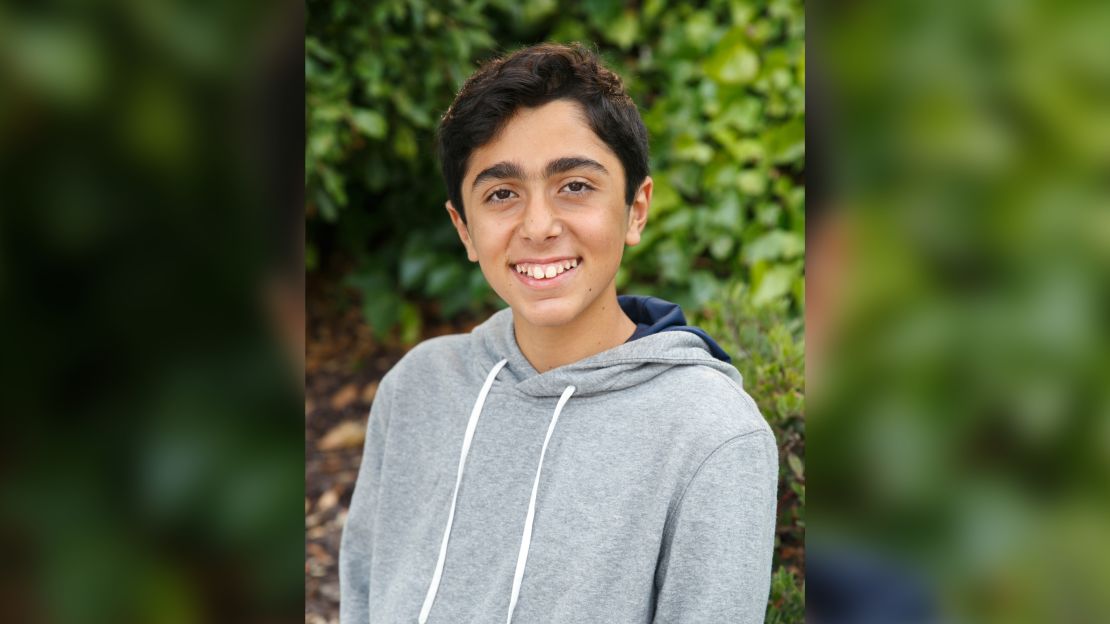Deny your kids access to digital life, and you hamstring their social life — especially in a pandemic. You also limit their ability to develop online skills that will help them succeed.
Grant your kids access to digital life, and you obsessively track every move to make sure they are not doing anything you wouldn’t want them to do. Or allow them some digital independence and accept they will inevitably end up doing or seeing things you wouldn’t want them to.
Technology can feel like an impossible situation
Experts say this lose-lose scenario isn’t inescapable, though. Our kids’ relationship with technology, and tech itself, can change in a way that prioritizes psychological well-being and ethical behavior.
A new collaborative project called HX brings together top thinkers and researchers in the field of ethical technology to work on generating new language, ideas and models of technology that put people first.
Tech companies currently put a lot of resources into perfecting the “user experience,” or how easy and pleasant a device or applichation is to use. HX wants us to also consider the “human experience,” in all our technology interactions, with a focus on how tech makes us feel, said David Ball, senior director at Headstream, an innovation program focused on building healthy and positive digital spaces and experiences for teens.
“As technology has become so integrated into our lives, we’ve started asking ourselves, ‘How is it impacting our well-being? How is it impacting our ability to connect with people?’ Policymakers, parents, and young people have a growing understanding that things could be different,” said Ball, who is also part of the HX team.
Why kids and teens need HX
Like many teens, Alexa Gwyn, now 19, said she can see how technology helps and hurts her. She appreciates the chance to educate herself about any subject, or connect with like-minded communities who, for previous generations, would have been out of reach.

But the way technology encourages her and her peers to compare themselves to one another and often harms their self-image in the process? Or how it emboldens groups of individuals to “cancel” someone for a mistake? Or make the world feel as though it’s in constant crisis? This didn’t sit right with Gwyn.
“This caused me a lot of anxiety and, as a young person, you feel like you can’t do anything about it,” she said. “I didn’t feel like I could talk to anyone about it because it didn’t really seem like a real problem when you compare it to all the horrible things that occur daily.”
Gwyn’s frustration with technology led to her 2017 involvement with Headstream while she was in high school in Palo Alto, California. Now an undergraduate at Vassar College, she still works with the program as a youth team leader, finding ways to feel better in digital spaces, and for digital spaces to make people feel better — “digital wellness,” at it’s called.
Ameen Berjis, 15, went through a similar process. He noticed his friends at his Oakland, California, high school feeling addicted to social media and video games, and for a time he couldn’t stay away from gaming.

“I see them going down a path of addiction, and they can’t stop scrolling,” he said. He knew digital life was inevitable but wondered if it could take a different shape to hold on to what kids like about it and get rid of some of what makes them feel so bad.
He now works on an app called Inspyre that pairs adult mentors with under-18 mentees in any field, an idea that earned him a spot in Headstream’s incubator program.
What can be done today
Families can encourage a better human experience for kids by moving away from the quantity conversation and toward establishing quality, said Mimi Ito, director of the Connected Learning Lab at University of California Irvine and cofounder of Connected Camps who is also part of HX. There are a number of questions parents can ask themselves to determine if their kid — and each kid is different — is experiencing quality.
“Are your kids able to realize their learning goals, or social goals, or healthy peer relationships (in their lives overall)? Is tech supporting these things?” she said.
If, for example, a child is into gaming, adults should consider which games they are playing and how it’s supporting their academic development. Are they simple, mind-numbing games played alone on a phone? Or more complex games that involve history, coding or working with others?
For kids who spend time on social media, help them think about what they are getting out of it. Stress and shame? Or, are they learning how to connect, and present themselves in the digital space, which will benefit them down the line?
“If you reorient in this way, you can make the tech support these awesome things we want kids to do, rather than think your role as a parent is to monitor and limit them,” Ito said, adding that too much control of time online may impede children’s ability to learn how to self-regulate. She recommends parents allow kids to begin exploring setting their own boundaries around age 10.
The less grown-ups play computer cop, the more kids will be open to discuss issues they are having with their digital life, she said. “If children think that parents are just going to judge and think it is all bad, then they won’t bring their problems to you. But once trust is established, parents can develop solutions together with their kids.”
Ball encourages parents to experience tech alongside their children. Start young so they can establish this trust. “It may look like playing games together and them seeing what losing looks like in the gaming space, or going through photos or creating an avatar together,” he said.
Whatever it is, “build tech into the relationship you have and make it not a thing that is done in secret.”
Gwyn also wants kids to talk more about their human experience in school.
Teachers could address how big app creators make their money, and how the apps work. They could also teach students on how to navigate some of the complexities of life online.
“Educate them about the fact that they can have agency and control over their digital lives, and can prevent and work around issues,” she said.
Moving toward a more human-centered future
Families can’t do this on their own.
“These digital platforms play a huge role in civic life,” Ito said. “There needs to be a recognition that this is a shared responsibility.”
Policymakers and app creators could do more to create more positive experiences online which, she argues, are now essentially public spaces. There could be more control of negative content online, she said, an issue that particularly affects the human experience of minorities.
“Black youth are much more likely to encounter harmful and hateful content online,” she said.
A more positive online experience wouldn’t just involve less bad stuff, Ball said. He’d like to see more options for users to transform activity online to activity offline. If someone shares a post in favor of fighting the climate crisis, they will be connected to local groups or activities with the same mission. One of his favorite social apps for young people is Novelly, which encourages young people to write about issues that matter to them and connect over these issues.
He’d like to see mental health outreach options integrated into social media platforms, so those in need would have access to a “trained, caring support network.” Also on his wish list is the creation of avatar options that are more inclusive and reflective of the diversity of human life.
Overall, a better human experience for kids would be less passive, and more active.
“We could be moving from the consumption of content, which is the common experience today, to the creation of content in which you are supporting somebody and connecting to them in a meaningful way,” he said.
Berjis would love to see a feature integrated into social media that would allow users to click through for context about the issue being discussed. He hopes this would help combat cancel culture by stopping people from “basing their assumptions off that one Tweet.”
Gwyn thinks change won’t happen until we start taking better advantage of a tried-and-true approach: conversation.
“Something that makes me hopeful about the future of tech isn’t necessarily a specific idea, but that so many people now have the spark to want to change things and get involved. These conversations are budding, they are just getting started, and they are things we haven’t talked about before,” she said.
“But now that they are, we realized we are all experiencing the same things and want change. There is strength in numbers.”
Takeaways
- Quality is more important than quantity when it comes to determining the value of time spent online
- Allow kids the chance to develop self-regulation skills when online
- Go online with kids starting at a young age to help them navigate digital spaces
- Encourage schools to talk about the emotional effects of digital life in the classroom
- Encourage kids to find spaces online where they can connect, rather than compare
Correction: An earlier version of this story misspelled David Ball’s last name.
Elissa Strauss is a regular contributor to CNN, where she writes about the politics and culture of parenthood.





